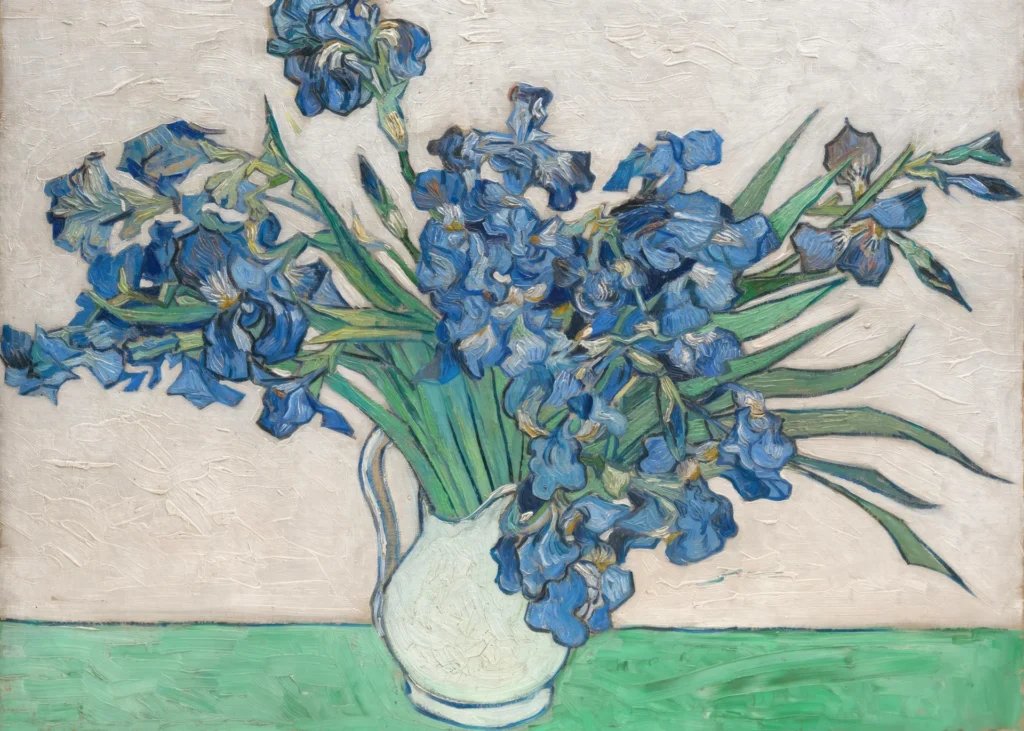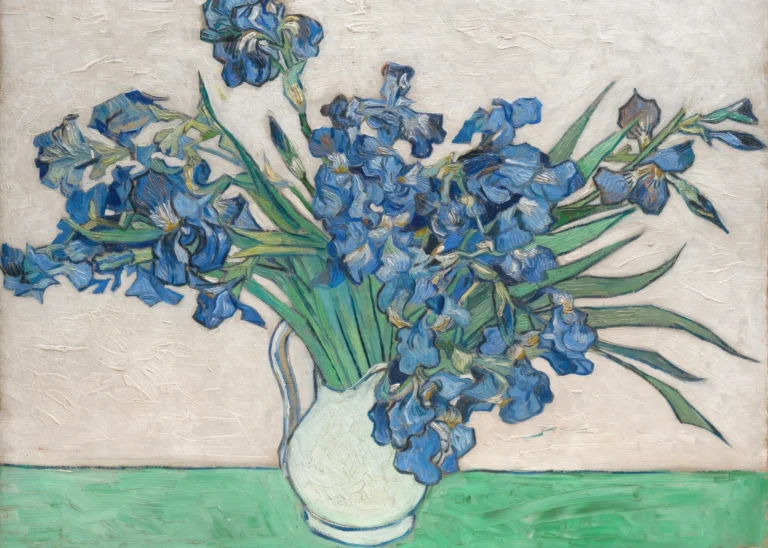Irises (1890)
Irises is a captivating artwork by Vincent van Gogh, created in May 1889 during his stay at an asylum in Saint-Rémy-de-Provence, France. The painting depicts a lively arrangement of irises, characterized by deep blues and violets that beautifully contrast with lush greenery and a warm backdrop. Van Gogh utilized dynamic brushstrokes and his signature impasto technique to bring texture and energy to the floral composition. Despite the fading of red pigments over time, the work remains a testament to his artistic genius, reflecting both his emotional state and connection to nature. Today, Irises is a centerpiece of the J. Paul Getty Museum, celebrated for its aesthetic and historical significance.
Year 1889
About the Artwork
The story behind Irises is deeply intertwined with Van Gogh’s personal struggles and artistic exploration during his time at the asylum. In May 1889, seeking refuge from his mental health battles, he found solace in painting the flowers around him. The irises became a symbol of beauty and resilience in the face of adversity. Van Gogh produced multiple variations of irises during this period, indicating not only his fascination with the subject but also his desire to express his emotional state through vibrant color and dynamic form. Irises encapsulates a moment of clarity and creativity amidst turmoil, showcasing the artist’s remarkable ability to transform personal pain into breathtaking visual poetry.










